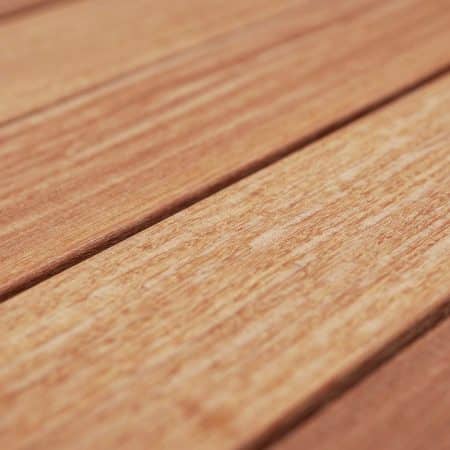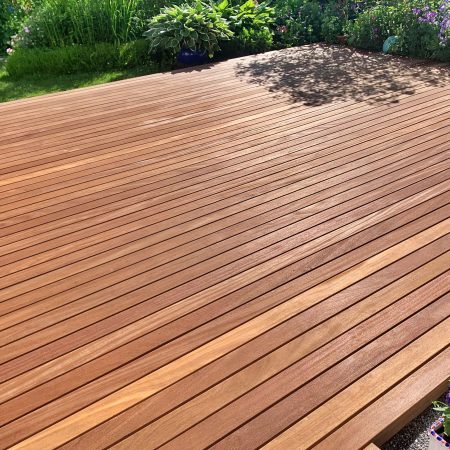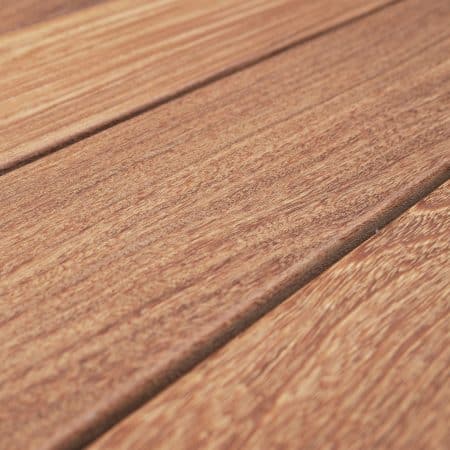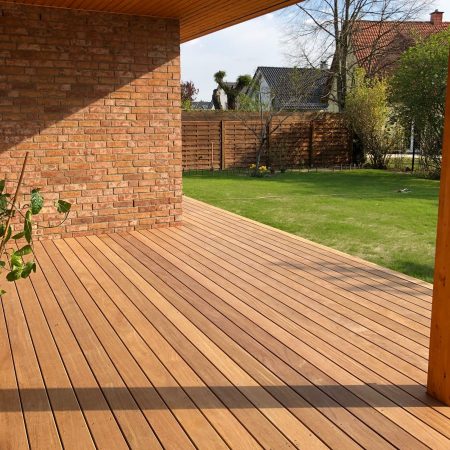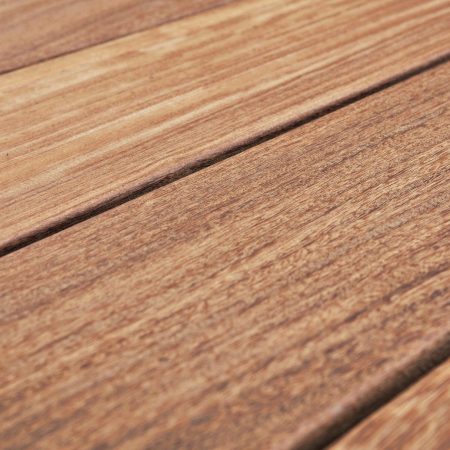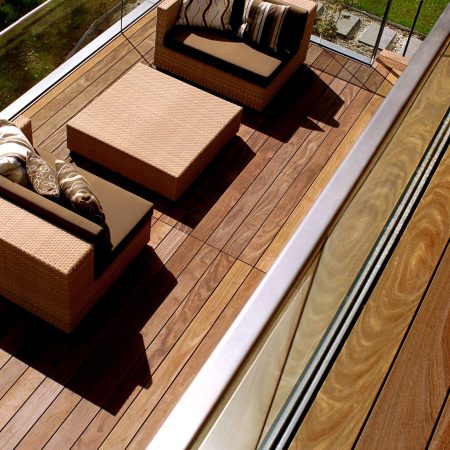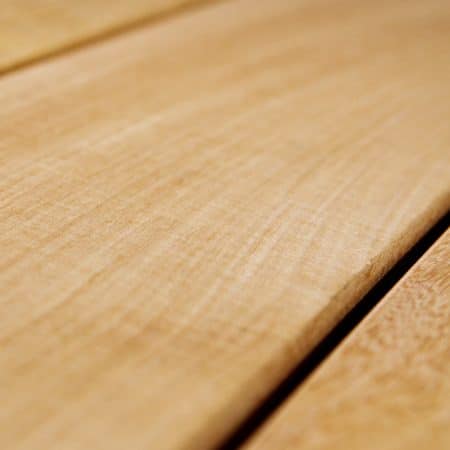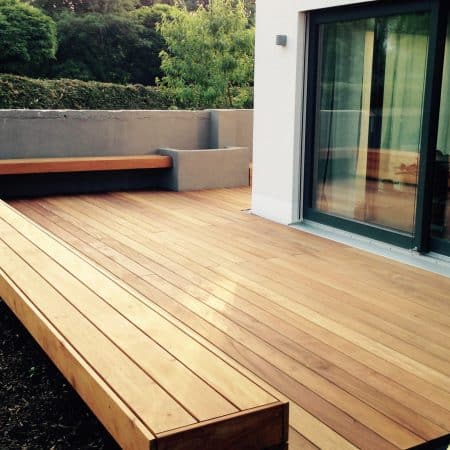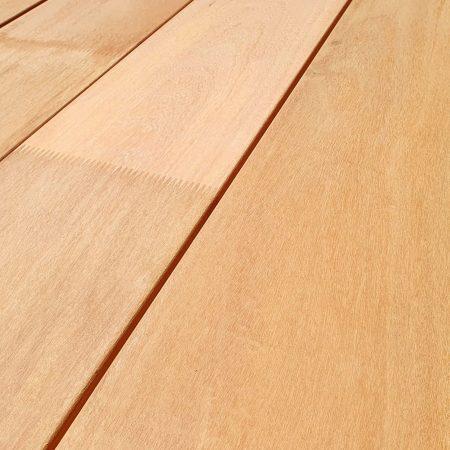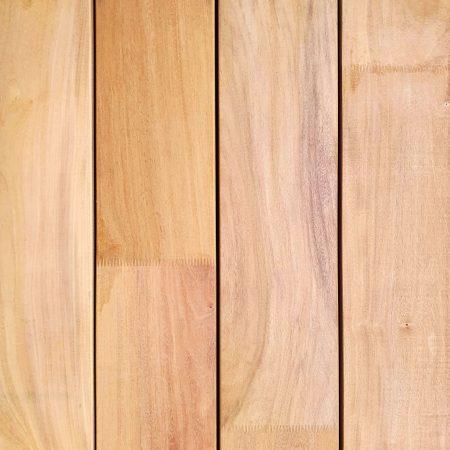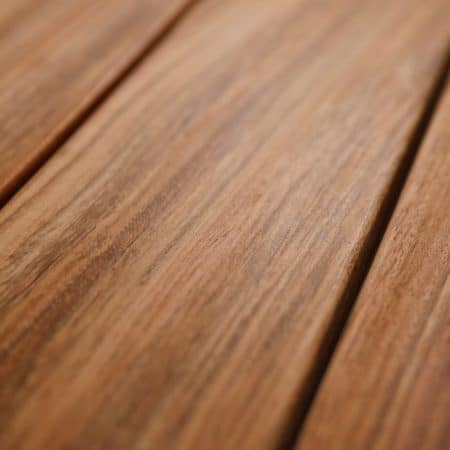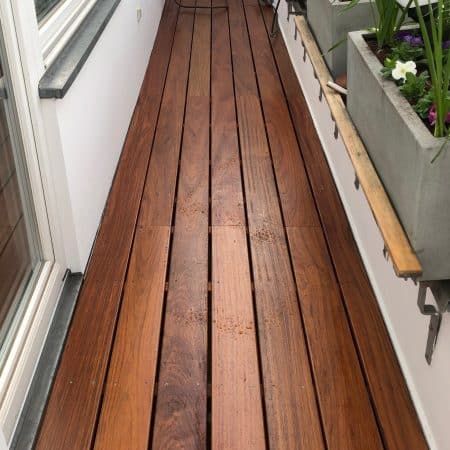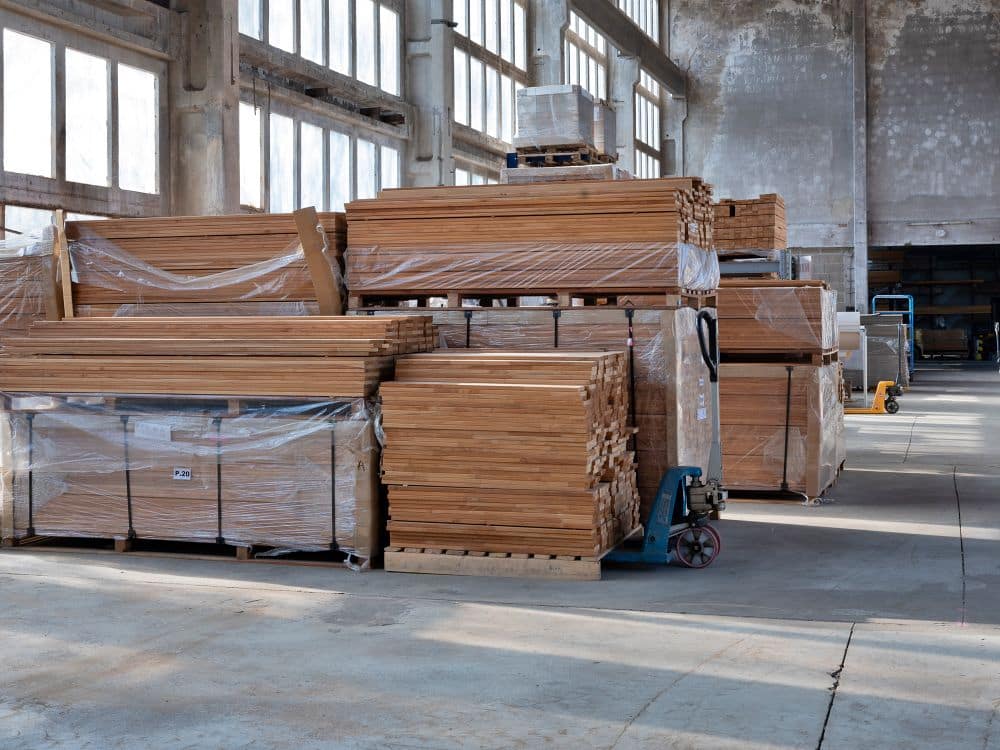
CONSULTATION » Decking boards " Sorting
Our hand sorting
We only import decking that meets the highest international quality standards and comes from sustainable forestry. Before we ship the wood to our customers, each decking board is checked according to our sorting criteria. Here you can find out which criteria these are and what you can expect from our decking boards.
A side and B side of decking boards
Every plank is checked by us on both sides. Most planks are flawless on both sides. It is possible to lay both sides as a visible side here. If errors are found on one side, the other side is checked. If there are no defects, the plank will be shipped, otherwise the plank will be discarded. In the following we refer to the visible side as the A side, the underside as the B side.
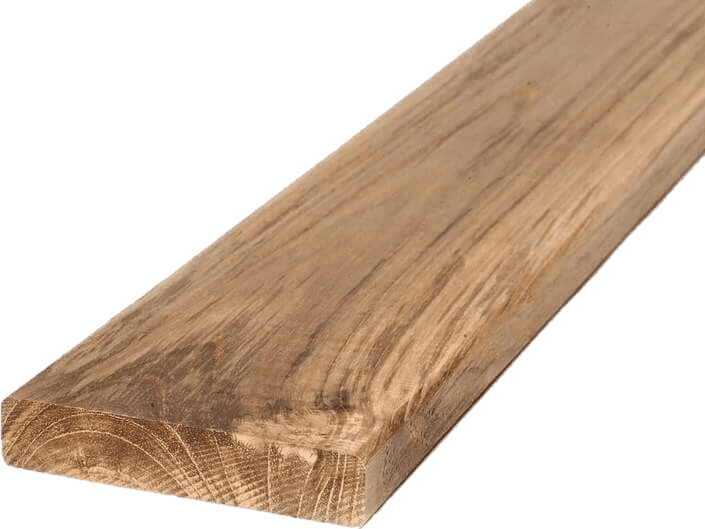
Our sorting criteria
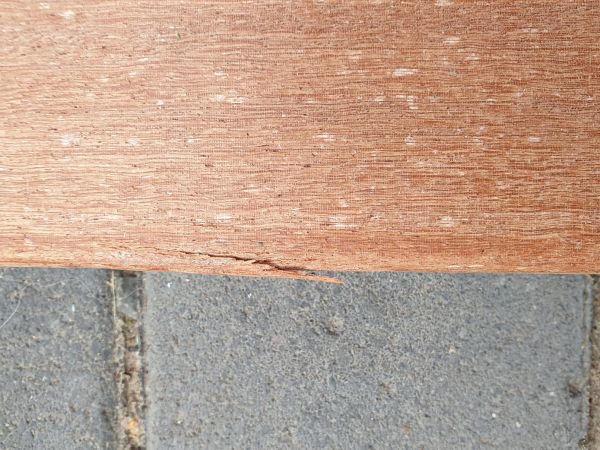
Spin-off
will be checked
A split is a wedge-shaped splinter that can form on the long edge of a plank. Planks with a split on the A side are sorted out by us. These may occur on the B side as they do not impair the constructive stability of the plank.
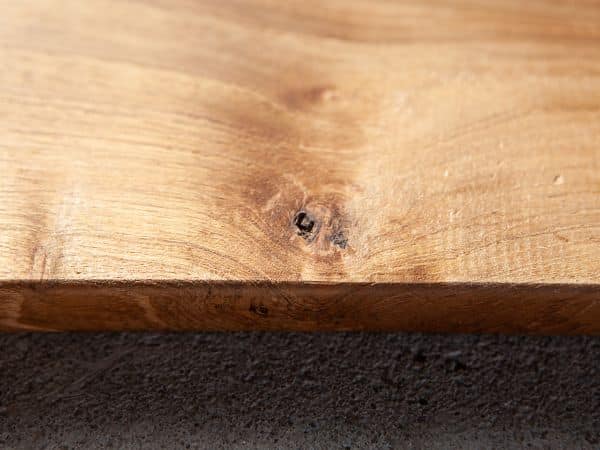
knothole
will be checked
Firmly grown knots are sorted out neither on the A side nor on the B side. Hollow knots on the A side are discarded. On the B-side they are tolerated if they are not consistent.

Damage to the end of the plank
will be checked
Floorboards may show minor damage at the end due to transport or cutting. Therefore, the planks are usually delivered slightly oversized. If the damage is so severe that a correct catalog size can no longer be achieved after cutting, the plank will be sorted out.
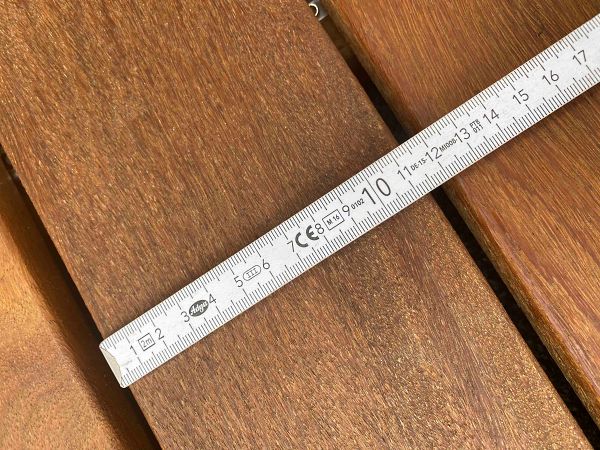
Width
will be checked
Depending on the humidity, the widths of the decking boards change slightly. Such natural changes in width are not sorted out. However, if the width is too small or too wide due to an error in planing, the plank is sorted out.
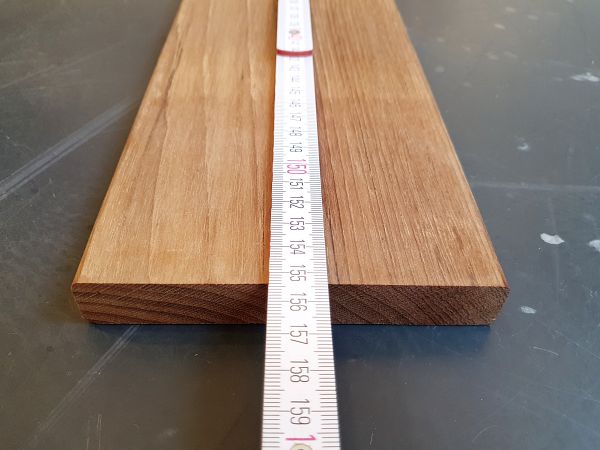
plank length
will be checked
Decking boards are usually supplied with a slight oversize in length. This means that it is still possible to eliminate transport damage at the end of the plank and still install the plank in the dimensions specified in the catalogue. Planks that do not reach the length of the catalog dimensions are sorted out.
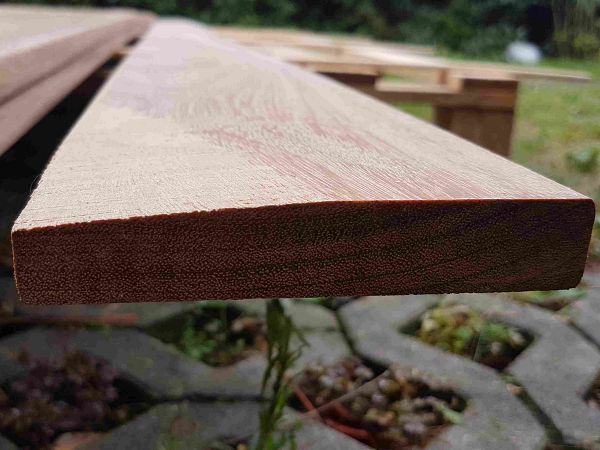
plank thickness
will be checked
The plank thickness can vary by a tenth of a millimeter due to humidity and temperature changes. If the plank thickness is different due to an error in the planing (as shown), the plank will be sorted out by us.
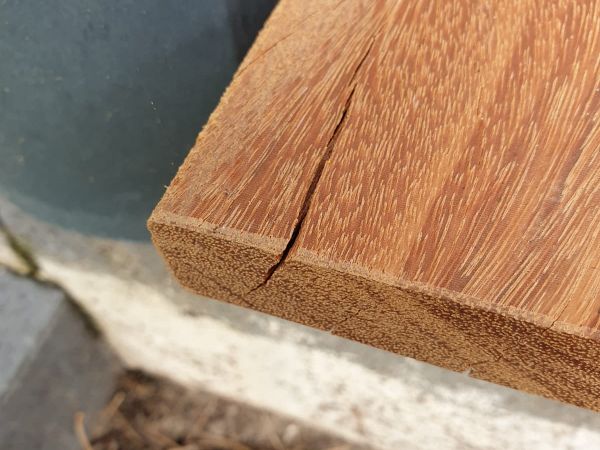
final crack
will be checked
End cracks can occur on the cut edge of the decking boards. Good drying and front edge wax reduce the risk, but cannot completely eliminate it. If the end crack is so deep that the plank can no longer be installed in your catalog dimensions despite the excess length after cutting, it will be sorted out.
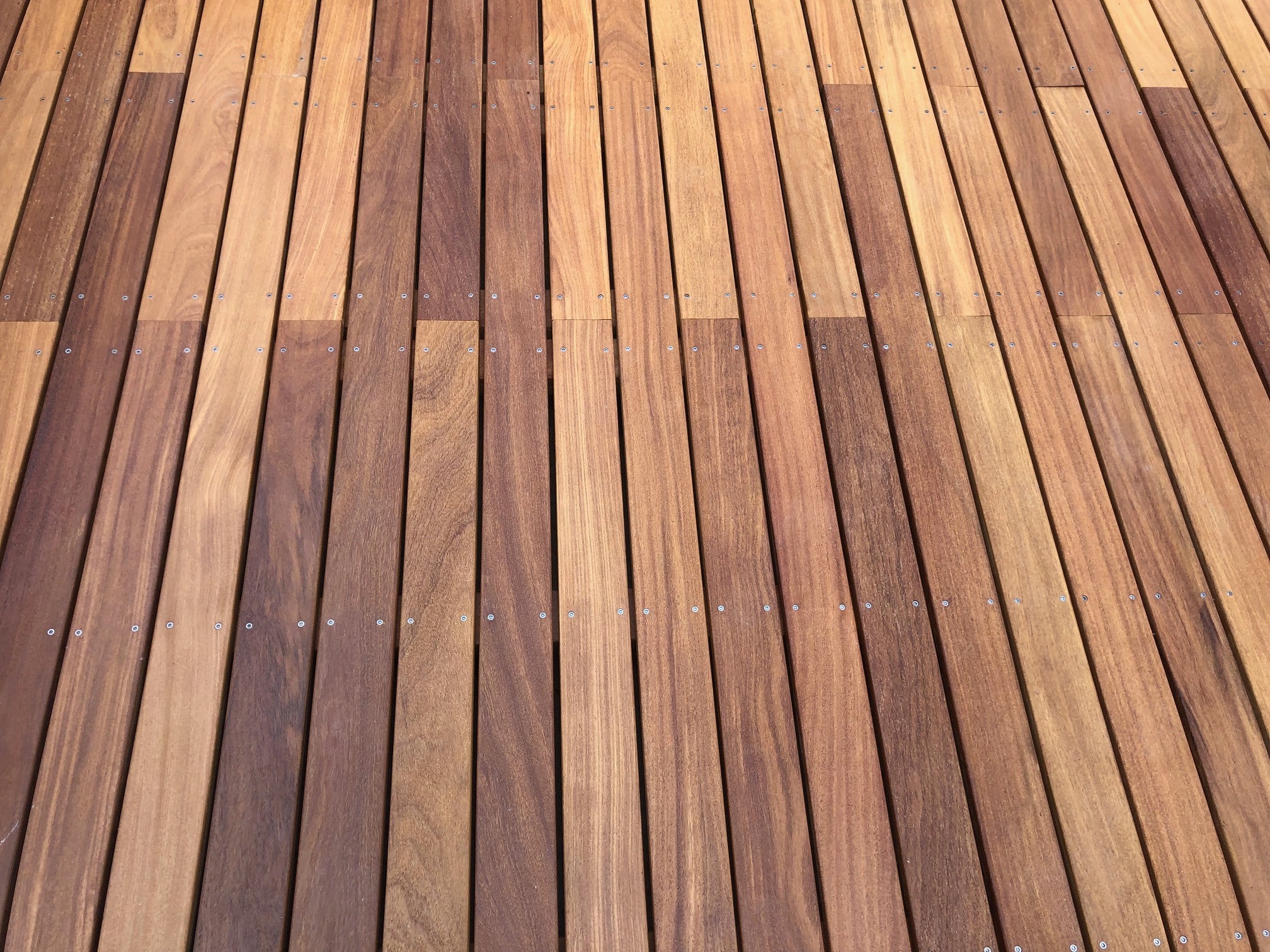
Color
is not sorted out
No decking board is like the other. Planks of the same type of wood also differ in colour. Therefore, the decking boards are not sorted according to their colour.
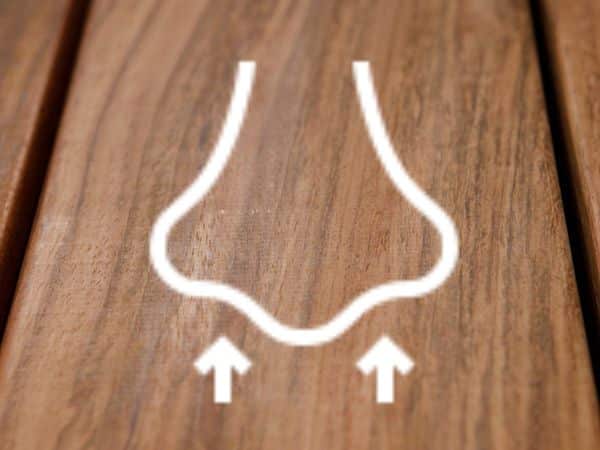
odor
is not sorted out
Some types of wood can develop an odor - especially when it is freshly laid and when it is warm and damp. This is one of the typical properties of wood. Planks are not sorted out because of their smell. The smell usually goes away after a few days or weeks.
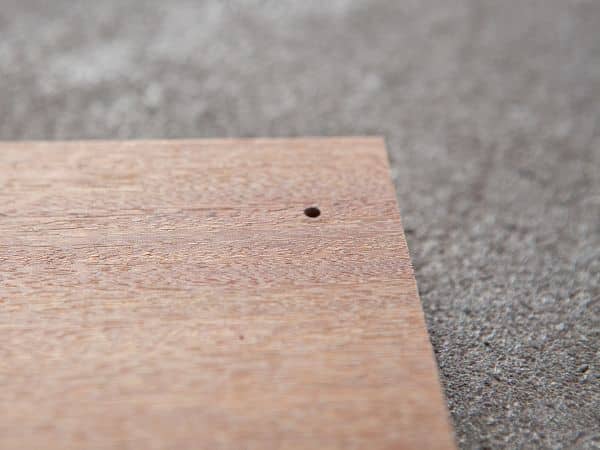
bigger hole
will be checked
A hole larger than 3mm in diameter may be caused by a moisture meter, a bore or an insect. Such holes are sorted out on the A side and tolerated on the B side. The holes can be closed with a round rod. An acute insect infestation can be ruled out due to the natural properties of tropical wood.
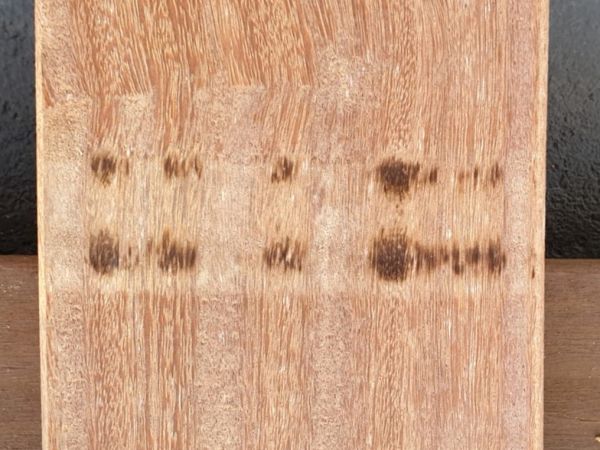
planing error
will be checked
Planing defects are indentations or burn marks caused by the planing machine. Planing errors on the A-side of a plank are sorted out. On the B-side they are tolerated.

Wooden spatula
will be checked
In production, in rare cases, holes are closed with a wooden spatula. We try to sort out the planks that have been filled on the A side. Because the filling has sometimes been implemented very well and is hardly recognizable, it can sometimes be overlooked.
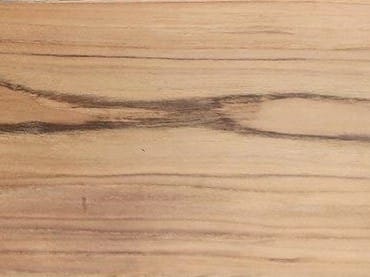
Grain
is not sorted out
No floorboard, no wooden panel and no cutting board is like the other - even if it is made of the same wood. Annual rings differ in color and arrangement. It is not possible to sort according to specific grains.
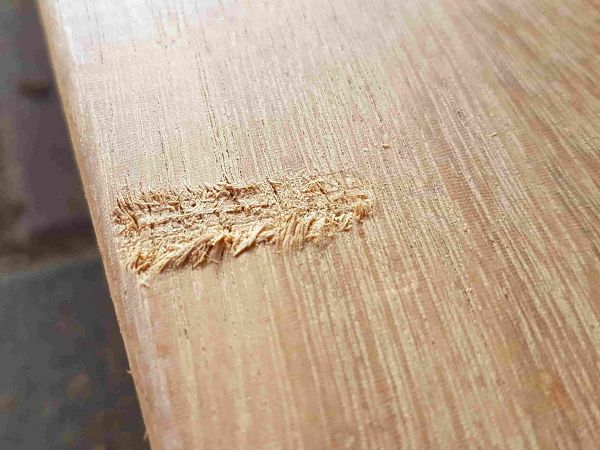
scratch
will be checked
Scratches can occur during storage or transport. A deep scratch (as shown) on the A side will be rejected and tolerated on the B side. Slight scratches, which can be removed with a simple abrasion, are tolerated.
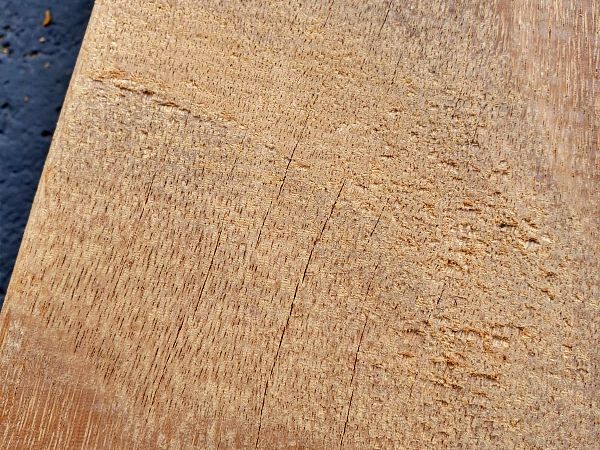
surface cracks
is not sorted out
These are superficial cracks that do not go through the full thickness of the decking. Surface cracks can occur in floorboards after long periods of drought, are among the properties typical of wood and are not sorted out. Decking oil reduces cracking.
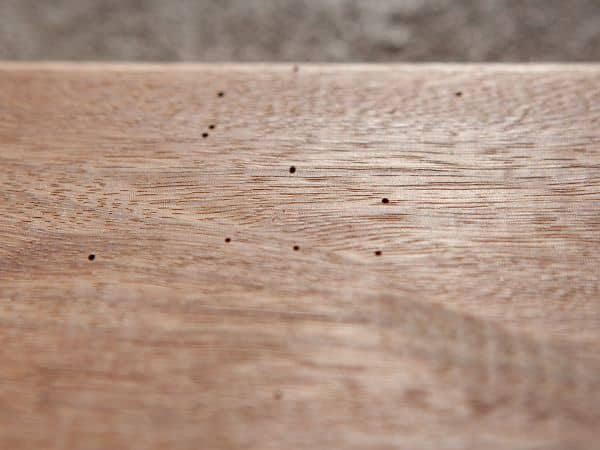
pinholes
will be checked
These are very small holes, less than 3mm in diameter, and tend to appear in clusters. Pinholes are caused by insects in the tropics. To a small extent (up to 10 pinholes per meter), pinholes on the A side are tolerated because they do not pose any structural restrictions. A higher occurrence of pinholes on the A-side is sorted out. Pinholes are tolerated on the B-side.
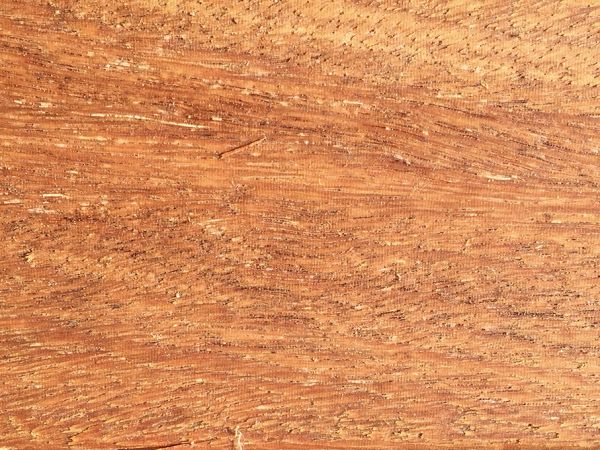
roughness
is not sorted out
Decking boards differ in their surface structure. Some planks can be a little rougher or fine wood fibers can stand up after weathering. This roughness is a characteristic of wood and is not sorted out. In the case of boards that are perceived as too rough, we recommend sanding them down with a 120 grit after the first weather exposure.

slates
will be checked
Slate is a wedge-shaped split or peeling off of the decking boards. Slate boards are sorted out by us. However, it cannot be ruled out that the floorboards will slate after installation and for a longer period of time outdoors.
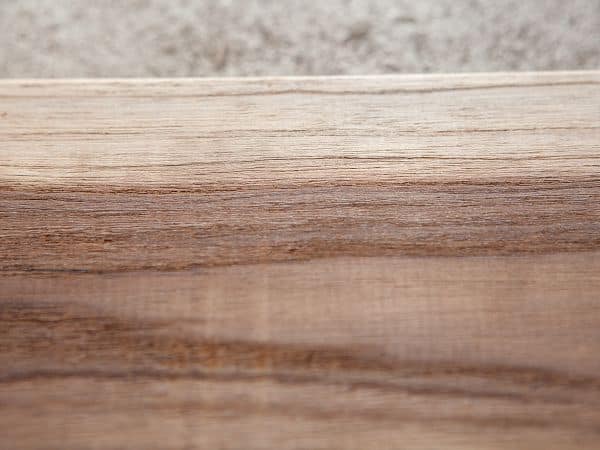
sapwood
will be checked
Sapwood is the younger growth wood and occurs at the edges of a tree. Planks with a sapwood content of more than 5% on the A side are sorted out. Planks with a sapwood content of more than 20% on the B-side are also sorted out.
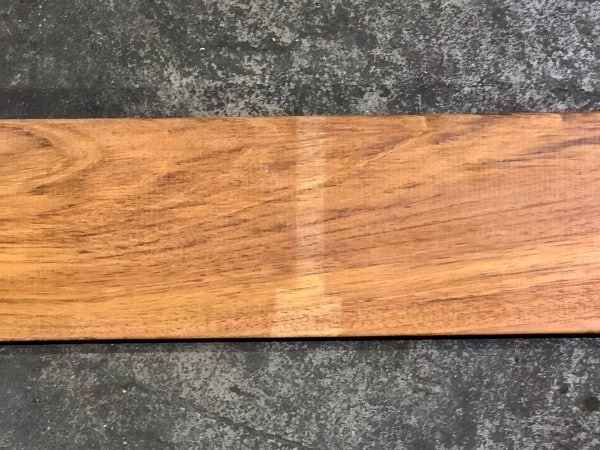
Discoloration of stock wood
is not sorted out
Decking boards are stacked with batts to prevent mold stains and to increase the stability of the stack. This can cause discolouration on wood that darkens. However, since these disappear under weathering, discoloration from wooden battens is tolerated.
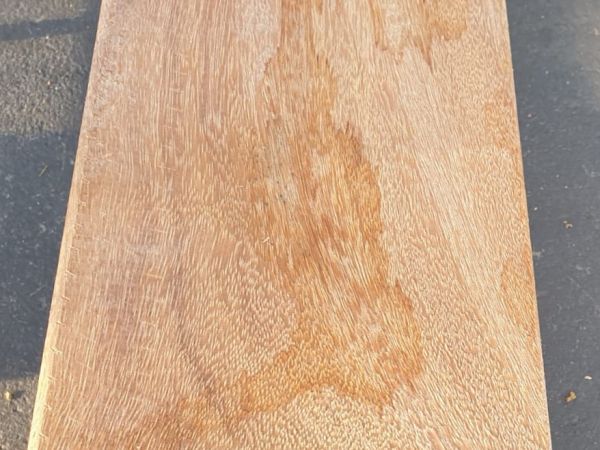
pollution
is not sorted out
During transport and storage, water stains can form on the floorboards, for example due to condensation. In rare cases, there may also be traces of paint, chalk marks or residues of adhesive tape on the floorboards. Since these blemishes can be removed without much effort - for example with soft soap - dirty floorboards are not sorted out.

delay
will be checked
Solid wood can warp due to changes in temperature and humidity. A vertical distortion (left-right) of the plank of more than approx. 2% is usually sorted out. However, distortion can also occur during transport and can be blocked in most cases. A horizontal warpage (up-down) or less vertical warping is tolerated, since these planks can be straightened and installed without any problems.
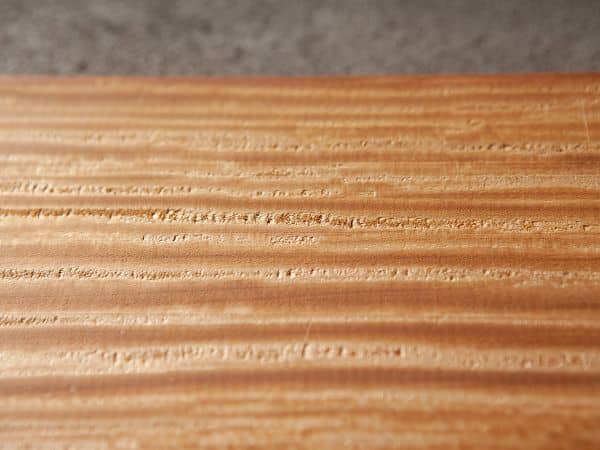
interlocked grain
is not sorted out
A changing direction of growth of the wood fibers is referred to as interlocked grain. As a result, not all wood fibers are planed off smoothly during planing and strip-like color changes can occur. Interlocking grain is not sorted out because it is one of the typical wood properties. The fibers can be smoothed by grinding.
Table of Contents
process
calculate demand
calculate costs
Order wood samples
Wood decking shipping
interim storage
Building instructions wooden terrace
grocery list
Prepare the subsurface
meadow or earth
stone or concrete
roof or balcony
hillside
Lay out the foundation
Establish height compensation
Lay the substructure
Install decking
Select saw blade
Screw the decking boards together
Building instructions terrace screws
Assembly instruction clips
Fade wooden terrace
build stairs
Decking boards crooked
Typical mistakes
Care for
Clean
Enjoy
Decking quality
Best decking wood
Wood species comparison
hand sorting
cracks and curvature
Durability wooden deck
Wood vs Aluminum
Concealed screw connection comparison
branded products
finger joint
Our decking boards
ab 6,10 €
Cumaru decking, FSC 100%
Price from: €70 per m2, resistance class: 1
Advantages: ✓ best durability ✓ particularly robust and scratch-resistant
Disadvantages: ✗ partly rough surface ✗ high power development
Tip: Sand the floorboards after they have been exposed to the weather for the first time.
ab 8,75 €
Cumaru decking, FSC 100%
Price from: €70 per m2, resistance class: 1
Advantages: ✓ best durability ✓ particularly robust and scratch-resistant
Disadvantages: ✗ partly rough surface ✗ high power development
Tip: Sand the floorboards after they have been exposed to the weather for the first time.
ab 11,50 €
Cumaru decking, FSC 100%
Price from: €70 per m2, resistance class: 1
Advantages: ✓ best durability ✓ particularly robust and scratch-resistant
Disadvantages: ✗ partly rough surface ✗ high power development
Tip: Sand the floorboards after they have been exposed to the weather for the first time.
ab 9,10 €
Garapa decking boards, FSC 100%
Price from: €65 per m2, resistance class: 1-2
Advantages: ✓ smooth surface ✓ homogeneous, light color
Disadvantages: ✗ Substances containing iron lead to discoloration ✗ Unscrewed tends to warp
Tip: Patio cleaning removes discoloration and
Professional interim storage avoids delay.
ab 9,80 €
Garapa decking boards, FSC 100%
Price from: €65 per m2, resistance class: 1-2
Advantages: ✓ smooth surface ✓ homogeneous, light color
Disadvantages: ✗ Substances containing iron lead to discoloration ✗ Unscrewed tends to warp
Tip: Patio cleaning removes discoloration and
Professional interim storage avoids delay.
ab 9,10 €
Jatoba decking, FSC 100%
Price from: €65 per m2, resistance class: 1-2
Advantages: ✓ smooth surface ✓ strong color and grain
Disadvantages:✗ unoiled tendency to crack ✗ colored ingredients wash out
Tip: Clean and oil decking boards after installation.




